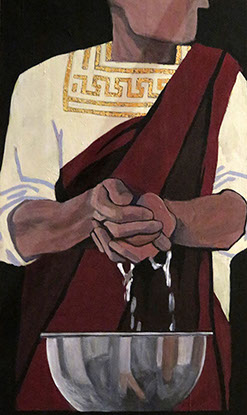
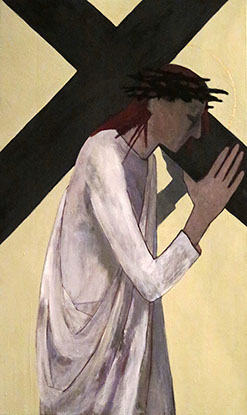
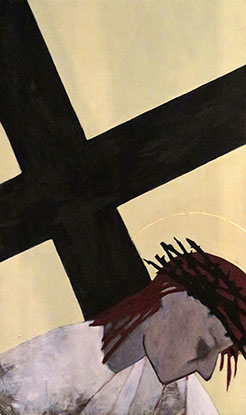
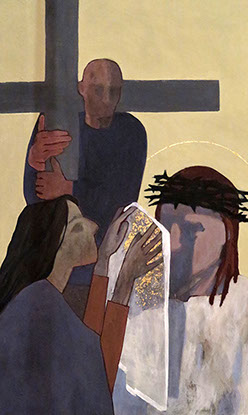

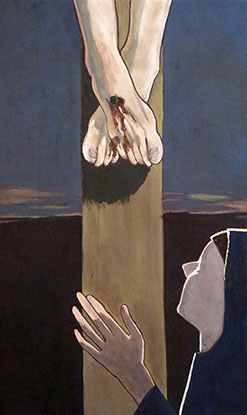
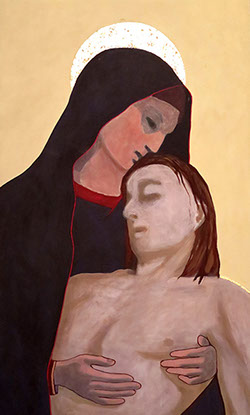
on painting Via Crucis
An artist gets the task of giving form to Via Sacra in a church in Braga. There shall be a number of paintings, all in a given format on a stone wall of a certain size. The story has been told so many times before, we all know it well. And the message is tremendous:
For God so loved the world, that he gave his only begotten Son,
that whosoever believeth on him should not perish, but have eternal life.
These are the parameters.
How do you go about it? The task is for certain a challenge.
First: Don´t panic. Yes, all the big masters of history have painted this. Now it is your turn to do it. Take it easy, stay concentrated, work step by step.
Second: The wall isn´t big enough to give space to all fourteen stations of the traditional Via Sacra. You have to choose some major points and focus on them. The advantage is that this also forces you to make the message clearer.
Third: You also have to choose form language and level of abstraction – with concentration on the essential. No unnecessary details, but without losing the power of the story.
Fourth: Now you just do it. And see to it that it becomes strong and beautiful.
Which stations to choose was easy, it came intuitively, naturally. It was the ones that carried a deeper meaning, brought the story forward, without which it would not have been what it is.
Without the decision of Pontius Pilate, who couldn´t withstand the strong will of the sacerdotes, all the Paqual events wouldn´t have happened. Jesus carrying his punishment on his back all through the streets of Jerusalem, for all to see, is of course in the very center of the story. On his path he falls, but encounters empathy and help, symbolized by Veronica and Simon from Cyrene. And the message of the scene with the women of Jerusalem, “don´t pity me, have pity for yourselves and for your children”, is a strong one for mothers of all time. The crucifixion and death of Jesus means the fulfillment of God´s plan. Mother Mary is at the foot of the cross, and after all that has happened she is also holding her son in her arms in the so well-known Pietà-scene. So these seven stations were chosen, and are the ones now hanging on the wall of Capela Imaculada of the Seminario Menor in Braga.
The first one of the stations that were left out is the one where Jesus meets his Mother. This is because the two of them also meet later – in a sense – in the Pietà-scene, and this scene was thought to carry the deeper message of love in the midst of pain and death. The three falls of Jesus could actually be shown in only one image. The other omitted stations were taken out because it could be done without the story collapsing. And the two stations with Simon of Cyrene and Veronica could be made into one, since they have the same message – the one of empathy put to practice.
All these choices being necessary because of the limited space, but also putting a stronger light on the heart of the story.
During the work the artist has also been confronted with many personal questions concerning the meaning of these events. Questions that it has been a gift to ponder about. Rewarding was also the recent meeting with the students of the Seminario Menor about the paintings and their meaning. It is them they belong to, and now was a good time to do this, it being the fasting period before Easter.
Lisa Sigfridsson
artist